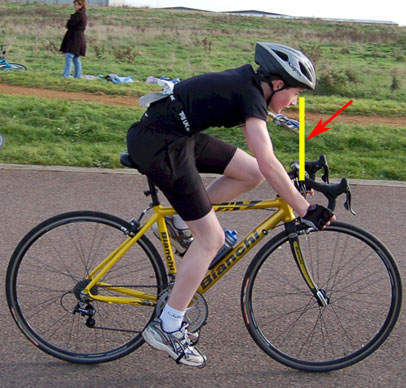Bike Fit
Perhaps the most important factor in your enjoyment of cycling is how the bike fits you. The better the fit the more force you can apply to the pedals in a smoother way and the more comfortable your riding will be. So we're looking at three elements of you and the bike:
The question of bike fit is one that should really be addressed before you start riding and before you buy your bike, that way when you begin riding you'll get none of those little niggles, like neck ache, that reduce the enjoyment of a very pleasant pastime. Having said that we know that position is a bit unrealistic, as you've probably already bought a bike and decided to enjoy the healthier lifestyle and fitness benefits that come with bike riding.
Given all of that, this section is aimed at getting you into a position as close to the ideal as your current bike will allow - and hopefully you'll enjoy cycling so much that the next bike you buy will be from a good bike shop who will aim to make sure your new bike fits you perfectly.
Frame Size
If you're like the majority cyclists and are buying a ready made bike then you'll have to buy one of the manufacturers standard sizes and adjust the components to fit your riding position and style. That's not really a problem as manufacturers produce sizes that fit all but the most extreme body sizes.
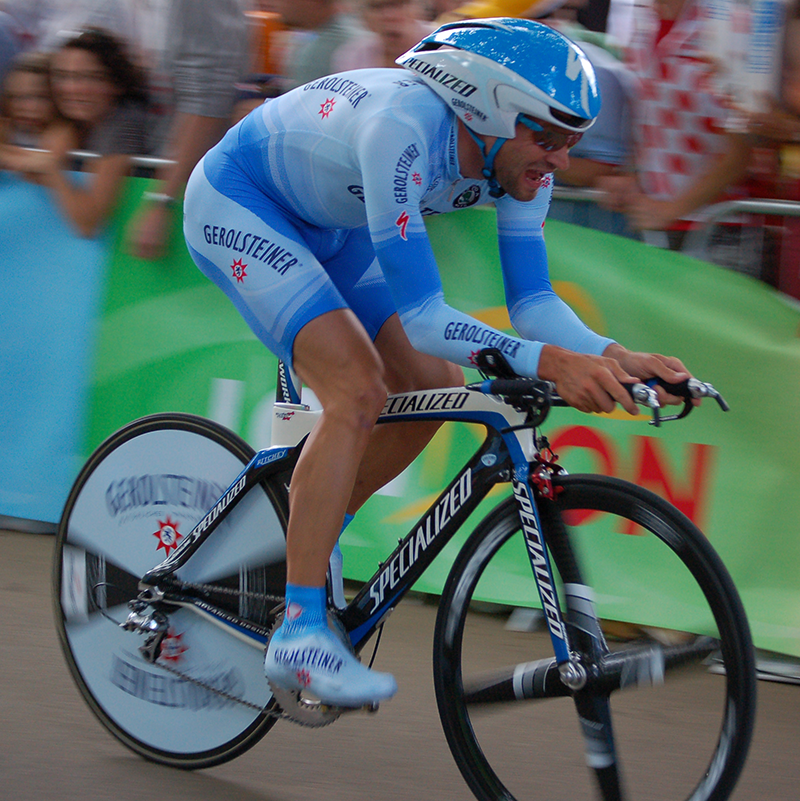
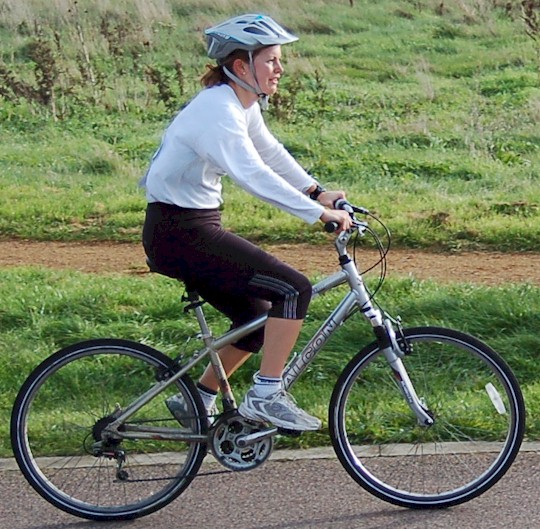
The actual frame size is just the measurement from the center of the bottom bracket (where the pedals go through) to the top of the seat tube. The best frame size used to be determined, on a racing or road bike, by standing over the top tube and making sure there was a 5 cm gap between that and your crotch. With mountain bikes and compact road bikes you need more room between the two, 12.5 cm to 20 cm being standard.
However, the best way to arrive at the correct frame size for you is to use your inside leg measurement (ILM) To get this accurately, stand against a wall with your legs about 10 cm (4 inches) apart. Get a friend or partner to slide a hard backed book against the wall and up to your crotch. You can then hold the book steady while your partner measures from the top of the book to the ground.
The following calculation will give the correct frame size:
Frame Size = ILM x 0.65
Saddle Height
Saddle height is the distance from the pedal at it's bottom most position to the saddle. A very good position to start with is obtained by putting the pedal at it's bottom most point,
where it's closest to the ground. Then sit on the saddle and put your heel on the pedal, if you can reach the pedal without shifting your weight to the pedal side but your leg is virtually straight then the saddle is the correct height.
Technically the saddle height should be 1.09 x ILM, i.e. just longer than your inside leg measured with your feet flat on the floor. If you look at the picture to the right the rider has his heel on the pedal and there is only a slight bend in the knee. That is just about the perfect position for saddle height.
However, as you make adjustments to the saddle, forward and backwards you should re-adjust the saddle height to make sure it's not adjusted too high or low.
Saddle Position
The saddle position fore and aft changes the power you can deliver to the pedals, which consequently changes your ability to go fast or even climb hills and mountains successfully. Again here, a mechanical adjustment with visual indications are best for all but a very few lucky cyclist who have a fitting service.
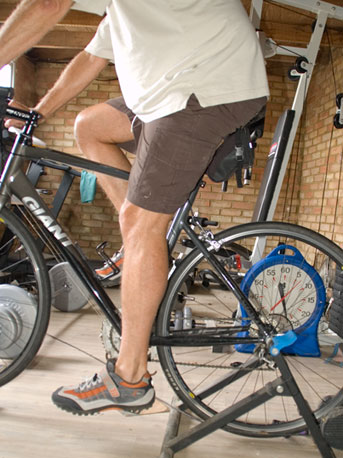
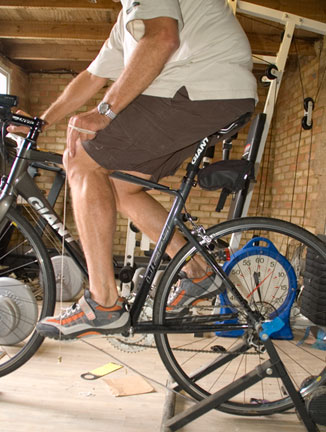
First of all you should make sure your saddle is level with the ground. You can do that either by line of sight or, to be exact, with a spirit level. If your saddle tips down then it throws you forward towards the handle bars. That places a lot of pressure on your arms as they are forced to support your weight more, that can give you tiredness across the shoulders and sometimes a lot of pain. If your saddle is tipped upwards (often the position of BMX bikers) it hits you in the groin and that can cause sores and a lot of pain.
To set the fore-aft position of the saddle you should sit on the saddle with you feet in or on the pedals in the 3:45 position. Then if you drop a plumb line down from the rear of your patella it should hit the pedal spindle, the central spindle that the pedal turns on.
Handle Bar Position - Stem Length
There are 2 positions that are important for handle bars, the height and the forward reach.
The height of the bars will often be determined by your racing intentions. People who want to go faster generally place the bars lower, so they can get into a more aerodynamic position, sometimes as much as10 to 13 cm below the saddle. People who want more comfort would raise the bars. On a road bike this wouldn't normally be above the level of the saddle, but in hybrid bikes it might be.
The handle bar reach is determined by the length of the stem, which is very variable so you should be able to find a stem length to suit. If (on a road bike) you put you hands on the drops and have a slight bend in your elbows, your eyes should be directly over the cross point of the handle bars and the stem. Dropping a plumb line from the end of your nose should achieve the same position.
However, nothing is set in stone, comfort is the key, and so long as you have a relaxed position if you experience pain in the lower back or shoulders then tweak your position slightly until you are perfectly comfortable.
